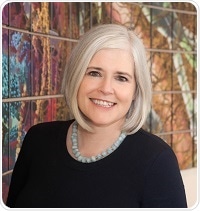The pharma and biotech industry continues to struggle to make progress with gender diversity. A recent Credit Suisse report shows that management diversity, as defined by percentage of women in senior management roles, has decreased globally from 18.9 percent in 2014 to 15.5 percent in 2016. The statistics in healthcare show a similar poor trend with a decline from 17.9 percent in 2014 to 15.9 percent in 2016.
In 2013, the California legislature set benchmarks for publicly traded companies to meet certain goals by December 2016 to increase gender diversity in corporate board rooms. A UC Davis study conducted in 2016 found that only 20.6 percent of pharmaceutical companies had met this benchmark.

The biotech industry is also still experiencing a shortage of women in leadership positions. Women make up approximately 20 percent of biotech management teams and approximately 10.5 percent of biotech boards (Liftstream).
At Halozyme, I am proud to say that 50 percent of our workforce is women and we have a 50/50 mix of women and men in key areas, including Research, Operations and Finance. Overall, our more senior managers (senior directors and above) are split about 40 percent female to 60 percent male and at the executive level, it is 50 percent female.
How has this changed over the past few decades? Has there been improvement?
The pace is slow and we simply have not generated enough data to tell us what is working and what’s not in the multiple efforts that have been implemented to improve gender diversity.
However, we have seen progress, especially in the technology sector. Intel started tracking and releasing diversity data in 2000. In 2015, the company announced it was committing $300 million to its diversity efforts over the next five years and began linking bonuses to hiring practices.
More recently, Google, Apple, Facebook and Twitter have followed suit by releasing their data and putting initiatives in place to address the issue. In the science sector, Merck, Biogen, Amgen and few other mostly-large players have a strong focus on and are already publishing their diversity statistics but it is fair to say we have a significant way to go.
More focus, open discussions, leadership commitment and disclosure, like what we are seeing in the tech industry, would appear to be valuable actions we can take.
What barriers limit women’s career progression in these fields?
I have observed that one of the biggest barriers is unconscious bias against hiring and promoting women. Harvard, along with other organisations, has conducted blinded resume studies showing how simply changing the gender on a resume, when all else is equal, impacts the hiring decision.
I have participated in multiple discussions where, until it is highlighted, women are discounted for a new role or for a promotion based on an assumption that they will not be able to handle stress, don’t want to travel, can’t be away from their children, are overly emotional and so on.
A key personal learning is the importance of having sponsors. Studies show that there is a lack of sponsorship for women. Unlike a mentor whose primary role is to provide advice, feedback and support, a sponsor uses their influence to ensure the individual has access to opportunities and challenging assignments that might not otherwise be accessible.
Research shows, however, that women tend to have mentors rather than sponsors, potentially a result some studies have observed, of having less access to senior leaders who could serve as a sponsor.
How can employers help to remove these barriers?
I believe diversity breeds diversity and it starts at the top of the organisation. The C-suite must set the example and be accountable for making diversity a priority and promoting a culture within which it can thrive. My experience has been that this leads to more organic growth of diverse leaders and teams within the organisation.
What biases do you see in this industry surrounding men and women both conscious and subconscious?
I believe in the research conducted by Harvard and others that shows an unconscious preference, an example of which is the study showing the preference toward the CVs of men over women for the same role.
While I do not fully appreciate why this occurs, we have proven at Halozyme that this tendency can be addressed through a focus on assuring diverse candidate pools and interview panels. We have a strong focus on talent management, which I think is somewhat unique for smaller biotech companies, but plays a clear role in why we promote equivalent numbers of men and women.

How can flexibility in the workplace help to reduce the gender gap?
I have had strong success with a range of flexible work plans in a number of companies. What is key is assuring this is right for the company and then selecting the right roles and individuals to make it work. My personal experiences have been mostly with women returning to part-time roles after having children but flexible work arrangements can benefit men and women equally.
What can workplaces do to be more accommodating for the work-family life?
Work-life balance is very subjective. At Halozyme, we ask managers to discuss this and agree on the approach that works for the employee and the company. As an example, several of my executives have young children they take to school in the morning. Understanding this, I seek to start meetings only at 9 a.m.
How valuable are positive mentors of either gender in promoting careers and aspirations?
Mentorship can be valuable for an individual who is looking for advice, coaching and support. I have had several terrific mentors who have advised me on career questions and how to handle challenges. In my experience, a mentor typically has limited influence when it comes to directly helping an individual advance their career.
In comparison, I believe sponsorship has a more significant impact on career advancement. Throughout my career, I have been fortunate to have leaders – or sponsors – who believed in me and afforded me the opportunities to take on new roles, increase my exposure and gain new skills, which ultimately allowed me to advance my career.
What advice would you give aspiring women in the pharma, healthcare and biotech industries?
It is well documented that women often will not consider themselves ready for advancement until they have all the skills for a new role. We hold ourselves back with this approach. My advice is apply for roles that will test you, take you out of your comfort zone and which require you to learn on the job.
Where can readers find more information?
There are several great bodies of research on gender diversity, including Liftstream’s “Diversifying the outlook: The X&Y of biotechnology leadership” and “A Public Reality for Women in Biotech Boardrooms,” McKinsey and Company’s “Women in the Workplace 2016,” and Credit Suisse’s “The CS Gender 3000: The Reward for Change.”
About Dr Helen Torley
 Dr. Helen Torley, M.B. Ch.B., M.R.C.P., joined Halozyme in January 2014 as President and Chief Executive Officer. Throughout her career, Dr. Torley has led several successful product launches.
Dr. Helen Torley, M.B. Ch.B., M.R.C.P., joined Halozyme in January 2014 as President and Chief Executive Officer. Throughout her career, Dr. Torley has led several successful product launches.
Prior to joining Halozyme, she served as Executive Vice President and Chief Commercial Officer for Onyx Pharmaceuticals from August 2011 to December 2013 overseeing the collaboration with Bayer.
She was responsible for the development of Onyx's commercial capabilities in ex-U.S. markets and in particular, in Europe. Prior to Onyx, Dr. Torley spent 10 years in management positions at Amgen Inc., most recently serving as Vice President and General Manager of the U.S. Nephrology Business Unit from 2003 to 2009 and the U.S. Bone Health Business Unit from 2009 to 2011.
From 1997 to 2002, she held various senior management positions at Bristol-Myers Squibb, including Regional Vice President of Cardiovascular and Metabolic Sales and Head of Cardiovascular Global Marketing. She began her career at Sandoz/Novartis, where she ultimately served as Vice President of Medical Affairs, developing and conducting post-marketing clinical studies across all therapeutic areas, including oncology.
Before joining the industry, Dr. Torley was in medical practice as a senior registrar in rheumatology at the Royal Infirmary in Glasgow, Scotland. Dr. Torley received her Bachelor of Medicine and Bachelor of Surgery degrees (M.B. Ch.B.) from the University of Glasgow and is a Member of the Royal College of Physicians (M.R.C.P).